Understanding Google Analytics Attribution Models to Boost Marketing Decisions in 2025
In the ever-evolving world of digital marketing, understanding how customers interact with your brand across multiple touchpoints is crucial for driving sales and improving return on investment (ROI). Enter Google Analytics (GA) Attribution Models—a powerful tool that helps marketers assign credit to these interactions along the customer journey. As we step into 2025, GA Attribution Models have become more sophisticated, offering businesses deeper insights into consumer behaviour and enabling data-driven decision-making.
This comprehensive guide will walk you through everything you need to know about Google Analytics Attribution Models in 2025. From setting up attribution models to exploring their advantages and disadvantages, we’ll also delve into current trends and provide actionable tips to help you leverage these models to increase sales and ROI.
What Are Google Analytics Attribution Models?
At its core, an attribution model is a set of rules that determines how much credit is assigned to each touchpoint a user encounters before converting. These models allow marketers to measure the effectiveness of various marketing channels by attributing value to them based on their role in the conversion process. In simpler terms, they help answer the question: Which part of my marketing strategy actually worked?
Google Analytics offers several built-in attribution models, as well as advanced options like Data-Driven Attribution, which uses machine learning to allocate credit dynamically. By selecting the right model for your business, you can gain valuable insights into what drives conversions and optimize your campaigns accordingly.
Why Should You Care About Attribution Models?
Before diving into the specifics, let’s address why attribution models matter in today’s competitive market:
- Improved Marketing Efficiency : Knowing which channels contribute most to conversions allows you to allocate resources effectively.
- Enhanced Customer Experience : Understanding the customer journey helps tailor experiences to meet user needs better.
- Increased ROI : By identifying high-performing channels, you can maximize returns while minimizing waste.
- Data-Driven Decisions : Attribution models empower you to make informed decisions backed by real-time data.
Now, let’s explore the different types of attribution models available in Google Analytics.
Types of Google Analytics Attribution Models
1. Last Interaction Model
The Last Interaction Model assigns 100% of the credit to the last touchpoint before a conversion occurs. This is the default model in Google Analytics and is straightforward but may oversimplify the customer journey.
Example : If someone clicks on a paid ad and then converts, the ad gets full credit for the sale.
2. First Interaction Model
The First Interaction Model gives all the credit to the first touchpoint in the customer journey. It emphasizes the importance of initial awareness-building activities.
Example : A person discovers your brand via social media and later converts after visiting multiple times. Social media would get full credit.
3. Linear Model
The Linear Model distributes credit equally among all touchpoints in the customer journey. It acknowledges that every interaction plays a role in the conversion process.
Example : If there were five touchpoints leading to a conversion, each would receive 20% credit.
4. Time Decay Model
The Time Decay Model assigns more credit to touchpoints closer to the conversion event. It assumes that recent interactions are more influential than earlier ones.
Example : Touchpoints occurring one week before a purchase might receive 60% credit, while those from two months ago receive only 10%.
5. Position-Based Model
Also known as the U-Shaped Model, this approach gives 40% credit to both the first and last touchpoints, with the remaining 20% distributed evenly among intermediate interactions.
Example : The first email campaign and final website visit share equal importance, while other interactions contribute less but still play a role.
6. Data-Driven Model
The Data-Driven Model leverages machine learning algorithms to analyze historical data and determine the actual contribution of each touchpoint. It provides the most accurate representation of the customer journey but requires sufficient data for reliable results.
Example : Based on past performance, the algorithm might determine that search ads deserve 30% credit, while display ads account for 15%.
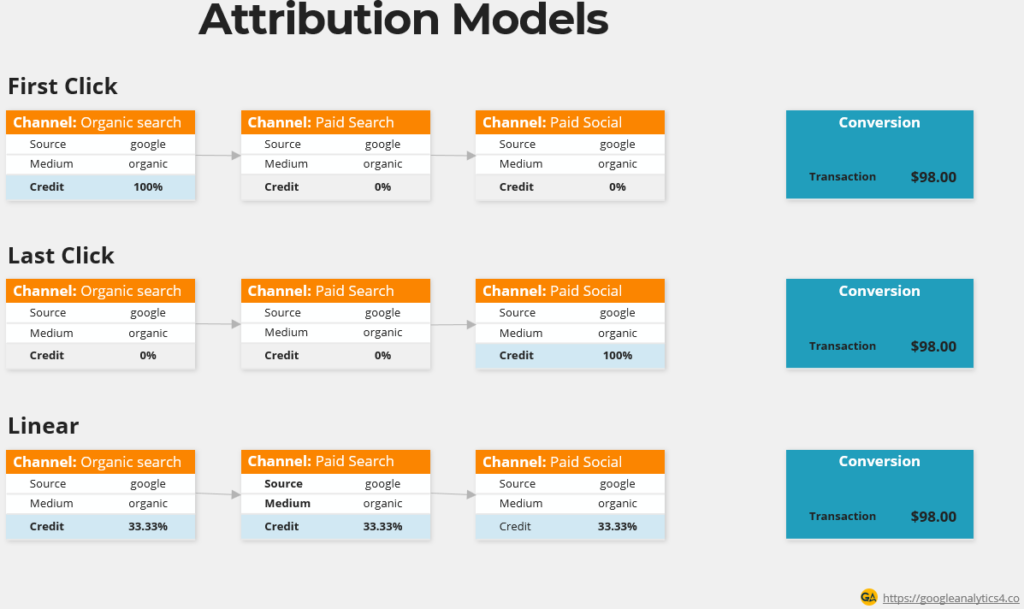
How to Set Up Google Analytics Attribution Models
Setting up an attribution model in Google Analytics is relatively simple once you understand the basics. Follow these steps:
- Log in to Google Analytics : Access your GA account and navigate to the property where you want to configure the model.
- Go to Multi-Channel Funnels : Under the “Conversions” section, click on “Multi-Channel Funnels.”
- Select Attribution Modeling Tool : Choose the “Attribution Modeling” option to view pre-built reports or create custom ones.
- Choose Your Model : Experiment with different models to see how they affect your conversion data.
- Apply Changes : Once satisfied, apply the selected model to your reporting settings for consistent tracking.
For users of Google Analytics 4 (GA4), the setup process involves navigating to the “Model Comparison Tool” under the “Explore” tab and selecting your preferred attribution model.
Advantages and Disadvantages of Each Model
| Model | Advantages | Disadvantages |
|---|---|---|
| Last Interaction | Simple and easy to interpret; aligns with traditional sales funnels | Ignores earlier touchpoints; overemphasizes final actions. |
| First Interaction | Highlights the importance of discovery and awareness-building | Overlooks post-awareness engagement |
| Linear | Equally values all touchpoints; promotes holistic thinking | Doesn’t account for varying influence levels |
| Time Decay | Prioritizes recent interactions; reflects real-world behavior | May undervalue early-stage touchpoints |
| Position-Based | Balances importance between key moments and supporting interactions | Requires manual configuration; less flexible than dynamic models |
| Data-Driven | Most accurate and personalized; adapts to unique customer journeys | Needs large datasets for reliability; complex to implement. Requires 30k+ monthly conversions. |
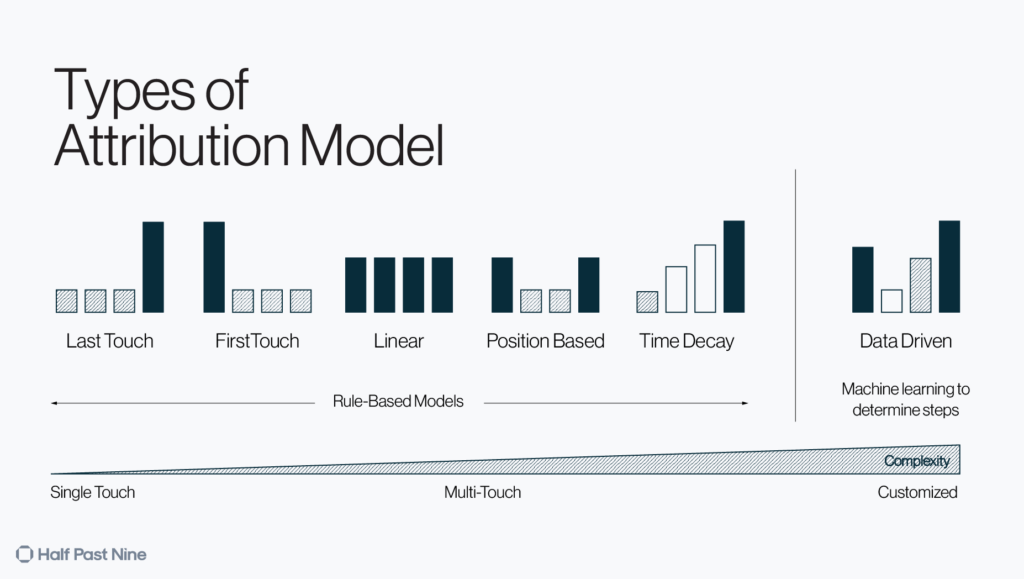
Current Trends in Google Analytics Attribution Models (2025)
As technology advances, so do the capabilities of GA Attribution Models. Here are some notable trends shaping the landscape in 2025:
- AI-Powered Insights : Machine learning continues to enhance the accuracy of Data-Driven Attribution, providing granular insights into customer behavior.
- Cross-Device Tracking : With more consumers using multiple devices, GA now offers improved cross-device attribution to ensure no touchpoint goes unnoticed.
- Privacy-Focused Solutions : Amid growing concerns around data privacy, GA has introduced tools that comply with regulations like GDPR while maintaining robust analytics capabilities.
- Integration with Other Platforms : Seamless integration with platforms like Google Ads, YouTube, and third-party CRM systems makes it easier to track end-to-end performance.
How Can You Utilize Attribution Models to Increase Sales and ROI?
To harness the power of GA Attribution Models, consider the following strategies:
Ask Yourself Key Questions:
- Which channels drive the most conversions?
- Are there underperforming touchpoints I should optimize?
- How does changing the attribution model impact my campaign metrics?
Actionable Tips:
- Test Different Models : Compare results across models to identify patterns and opportunities.
- Focus on High-Impact Channels : Allocate budget toward channels receiving significant credit.
- Personalize User Experiences : Use insights from attribution data to refine targeting and messaging.
- Optimize Funnel Stages : Address gaps or inefficiencies at specific stages of the customer journey.
Real-Life Example:
A retail company noticed that organic search drove initial awareness but wasn’t credited adequately in their Last Interaction Model. After switching to a Position-Based Model, they realized the true value of SEO efforts and invested more in content marketing. Within six months, organic traffic increased by 30%, contributing significantly to overall revenue growth.
Which industries benefit the most from implementing custom attribution models in their digital marketing strategies?
Key Industries Benefiting from Custom Attribution Models
- E-commerce:
- Online retailers can track multiple touchpoints across devices and platforms.
- Helps understand the intricate path to purchase, optimize marketing efforts, and improve conversion rates.
- Enables effective budget allocation based on insights gained.
- B2B Companies:
- Particularly valuable for businesses with longer sales cycles.
- Provides insights into the impact of various marketing touchpoints throughout extended customer journeys.
- Essential for nurturing leads and optimizing the sales funnel over time.
- Travel and Hospitality:
- Characterized by complex, multi-touch customer journeys involving various channels and devices.
- Custom attribution helps understand the effectiveness of different marketing efforts.
- Aids in improving the overall customer experience.
- Financial Services:
- Banks, insurance companies, and fintech firms can track the impact of different marketing channels.
- Crucial for acquiring high-value products and enhancing customer retention strategies.
- Healthcare:
- Providers and pharmaceutical companies can analyze patient journeys while maintaining compliance with strict regulations.
- Facilitates the creation of more targeted and effective marketing campaigns.
- Automotive:
- The industry typically involves long and multi-channel car-buying decisions.
- Custom attribution tracks the impact of various marketing efforts on both online and offline conversions.
- Subscription-Based Services:
- Companies offering subscription models (e.g., SaaS, streaming services) can understand which marketing efforts drive initial sign-ups and long-term retention.
- Allows for more precise targeting and customer engagement strategies.
By implementing custom attribution models, these industries can align their marketing efforts with specific business goals, leading to:
- More accurate measurement
- Actionable insights
- Improved return on investment
The ability to tailor attribution to reflect unique customer journeys ensures that every interaction is accurately tracked, providing precise insights into what drives conversions and how to allocate marketing budgets effectively.
Google Analytics 4: Revolutionizing Digital Marketing with AI and Privacy-First Approach
- AI-Powered Insights:
- Advanced machine learning algorithms for more accurate attribution
- Improved predictive analytics and automated trend detection
- Enables proactive responses to user behavior patterns
- Privacy-Centric Data Collection:
- Enhanced server-side tagging and advanced consent mode features
- Ensures compliance with stricter global privacy regulations
- Balances accurate attribution with user privacy protection
- Cross-Platform Measurement:
- Improved tracking of user interactions across multiple devices and platforms
- Provides a more comprehensive view of the customer journey
- Customizable Attribution Windows:
- Businesses can tailor attribution windows to specific sales cycles
- Offers more relevant insights into marketing effectiveness
- Data-Driven Attribution (DDA) Enhancements:
- Sophisticated algorithms analyze patterns and behaviors
- Adapts dynamically to each unique user journey
- Integration with Google Ads:
- Refined conversion attribution for various marketing channels
- Focus on accurate ROI representation for PPC efforts
- Unified Cross-Platform Reporting:
- Improved tools for analysing user behaviour across web, mobile apps, and other platforms
- Offers a single, cohesive view of user interactions
What are the privacy implications of GA4’s enhanced server-side tagging
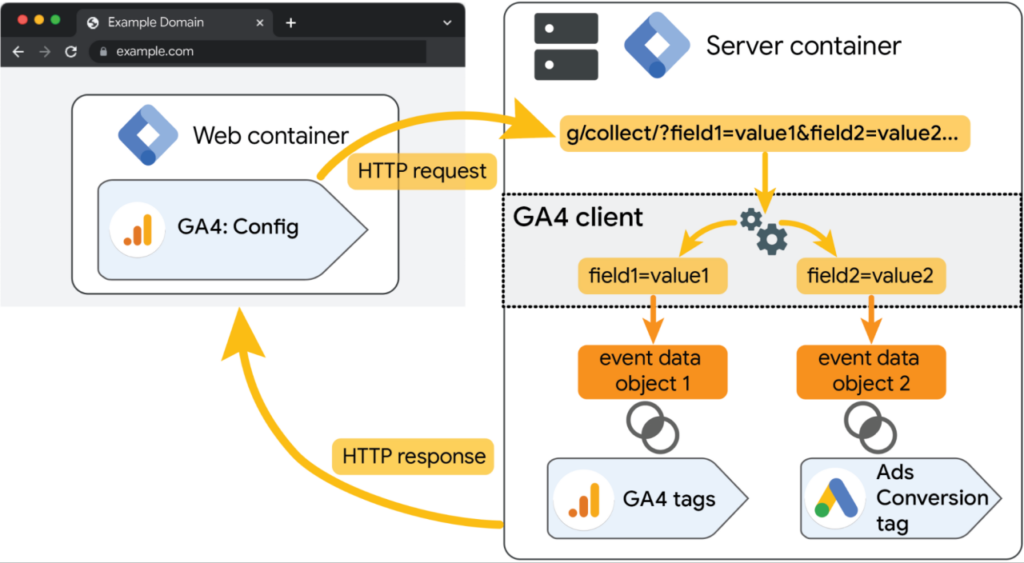
GA4’s enhanced server-side tagging offers significant privacy improvements over traditional client-side tracking methods. Here are the key privacy implications:
Improved Data Control and Security
Server-side tagging routes data through your server before sending it to analytics tools, providing several privacy benefits:
- Enhanced data filtering and masking capabilities
- Ability to remove or hash personally identifiable information (PII) before transmission
- Better protection against data leaks, as sensitive information remains within your cloud environment
Compliance with Privacy Regulations
Server-side tagging helps businesses meet strict privacy regulations like GDPR and CCPA:
- Improved consent management through easier handling of user privacy preferences
- Greater control over data collection and processing, ensuring compliance with data protection laws
- Ability to implement more granular data anonymization techniques
Ad Blocker Circumvention and Data Accuracy
While not strictly a privacy feature, server-side tagging’s ability to bypass ad blockers has privacy implications:
- More consistent data collection, potentially reducing the need for invasive tracking methods
- Improved data accuracy without compromising user privacy preferences
IP Address Anonymization
GA4 with server-side tagging offers enhanced IP address protection:
- Automatic IP address anonymization by default
- Use of machine learning to remove identifying portions of IP addresses, protecting user location and identity
Extended Cookie Management
Server-side tagging allows for more privacy-friendly cookie handling:
- Ability to extend cookie lifespans using subdomains, reducing the need for frequent user identification
- Option to convert JavaScript cookies to HTTP cookies, providing more control over data retention
Challenges and Considerations
While server-side tagging offers privacy benefits, it’s important to note:
- Implementation requires technical expertise and may incur additional costs
- Businesses must still obtain necessary user consents and handle data responsibly
- The increased control over data comes with greater responsibility for privacy protection
Server-side tagging in GA4 provides powerful tools for enhancing user privacy, but it requires careful implementation and ongoing management to fully realize its privacy-protecting potential.
How does GA4’s attribution model handle data from multiple devices?
GA4’s attribution model, particularly the Data-Driven Attribution (DDA) model, has significantly improved its handling of data from multiple devices:
- Enhanced cross-device tracking: GA4 now provides better attribution across multiple devices and sessions, offering a more comprehensive view of the customer journey.
- Unified tracking: GA4 offers integrated measurement across websites and mobile apps, creating a holistic view of user interactions throughout the customer journey.
- Cross-platform measurement: The model analyses user behaviour across different devices, providing insights into how users interact with your brand on various platforms.
- Advanced machine learning: GA4’s algorithms can now handle more complex, multi-touch customer journeys typical in multi-device scenarios.
- Probabilistic modelling: GA4 uses a probabilistic model that considers factors like user behaviour, time lag, and the order of touchpoints across devices.
By leveraging these capabilities, GA4’s attribution model provides a more accurate representation of how different devices contribute to conversions, enabling marketers to make more informed decisions about their cross-device marketing strategies.
How does GA4’s integration with Google Ads enhance conversion tracking?
GA4’s integration with Google Ads significantly enhances conversion tracking, providing marketers with more accurate and comprehensive insights. Here are the key ways this integration improves conversion tracking:
Enhanced Conversion Accuracy
- GA4 now supports Enhanced Conversions, previously exclusive to Google Ads
- Allows matching of user interactions on websites with Google accounts
- Improves precision in conversion attribution, even across devices or email accounts
Cross-Platform Measurement
- Offers unified tracking across websites and mobile apps
- Provides a holistic view of user interactions throughout the customer journey
Advanced Audience Insights
- Enables creation of highly targeted segments based on user behaviour.
- Facilitates customized ad delivery to specific audiences.
Data-Driven Attribution
- Utilizes sophisticated algorithms to analyze conversion patterns
- Adapts dynamically to each unique user journey
- Helps understand the true impact of each touchpoint on conversions
Seamless Data Flow
- Allows import of GA4 key events as secondary conversion actions in Google Ads
- Enables comparison of attribution differences between platforms
Improved Reporting
- Unlocks additional reports, dimensions, and metrics in GA4
- Provides a more comprehensive view of ad performance and user behavior
First-Party Data Integration
- Leverages first-party data for more accurate conversion tracking
- Enhances privacy compliance through data hashing and encryption
By integrating GA4 with Google Ads, marketers can achieve a more nuanced understanding of their conversion funnel, optimize ad campaigns more effectively, and make data-driven decisions to improve overall marketing performance.
What are the key benefits of using GA4’s data-driven attribution model
GA4’s data-driven attribution model offers several key benefits for marketers and businesses:
- More Accurate Attribution:
- Uses machine learning to analyze up to 50 customer interactions over 90 days
- Provides a more holistic view of conversion paths compared to last-click attribution
- Adapts to your specific data, giving tailored insights for your business
- Improved Marketing Spend Optimization:
- Helps distribute credit more fairly across marketing touchpoints
- Prevents over or undervaluing of individual channels
- Enables better allocation of marketing budgets based on actual impact
- Enhanced Cross-Platform Measurement:
- Offers unified tracking across websites and mobile apps
- Provides insights into user behavior across different devices
- Helps create a more comprehensive view of the customer journey
- Advanced Audience Insights:
- Facilitates creation of highly targeted segments based on user behavior
- Enables more personalized ad delivery to specific audiences
- Privacy-Compliant Tracking:
- Works effectively in a post-cookie, privacy-first world
- Respects user privacy while still providing valuable insights
- Integration with Google Ads:
- Allows seamless import of GA4 audiences into Google Ads
- Provides more accurate conversion data for PPC campaign optimization
- Continuous Learning and Adaptation:
- The model keeps learning and adjusting as new data comes in
- Provides up-to-date insights reflecting current market conditions
- Deeper Understanding of Customer Journeys:
- Analyzes both successful and unsuccessful user paths
- Considers factors like timing, device, ad order, and ad type
- Accessibility:
- Now available to all GA4 users, not just premium (GA360) customers
- Set as the default attribution model in GA4 properties
By leveraging these benefits, marketers can gain a more nuanced understanding of their conversion funnel, make data-driven decisions, and ultimately improve their overall marketing performance and ROI.
Conclusion: Embrace the Power of Attribution Models
Google Analytics Attribution Models offer unparalleled insight into the customer journey, empowering businesses to refine their marketing strategies and achieve better outcomes. Whether you’re a small startup or a global enterprise, leveraging these tools can lead to increased sales and improved ROI. Stay ahead of the curve by staying informed about the latest trends and continuously testing new approaches to unlock maximum potential.
By mastering GA Attribution Models in 2025, you’ll not only enhance your marketing effectiveness but also position yourself as a leader in the digital age. So, take action today—your success depends on it!
References:
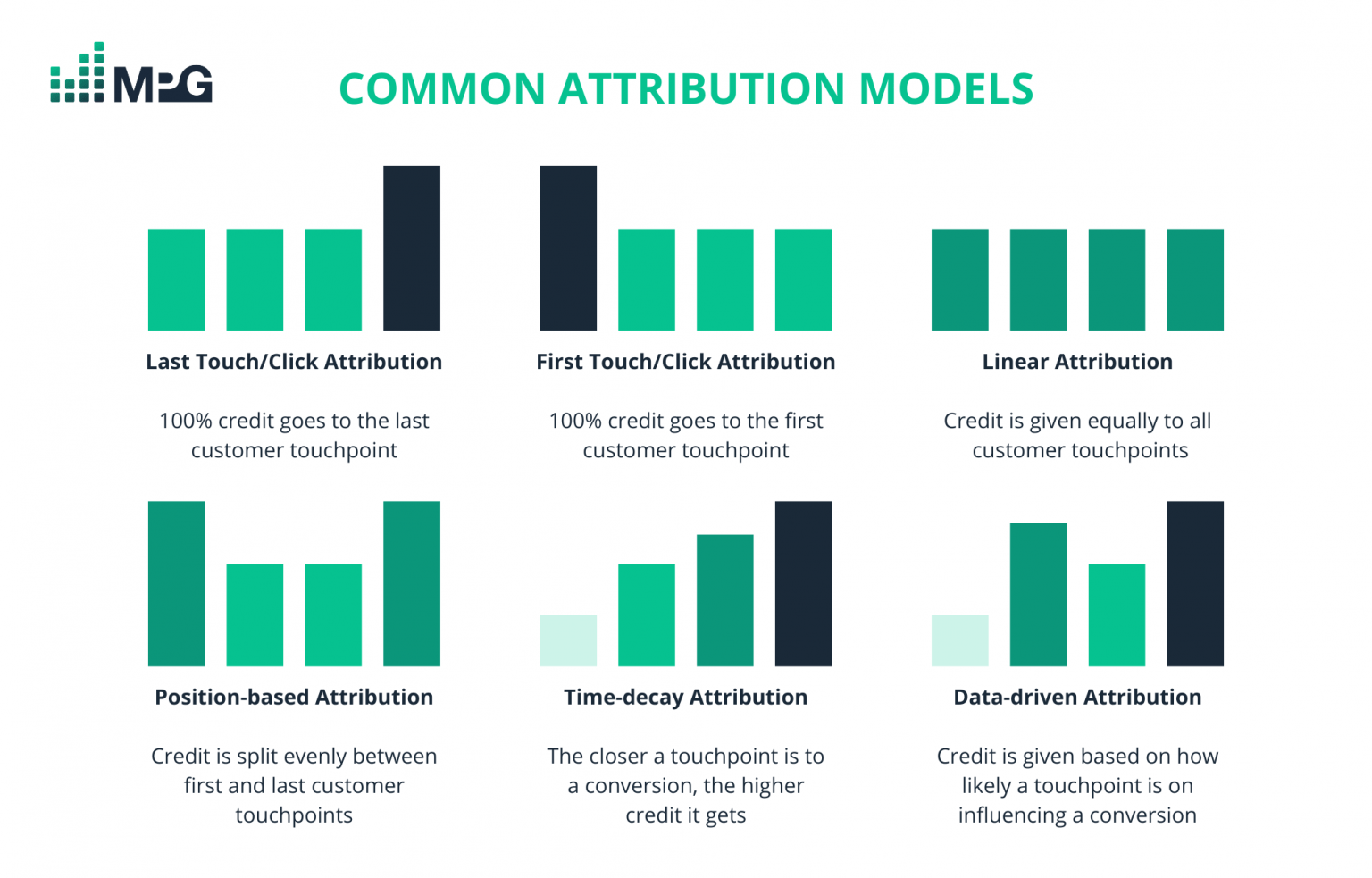

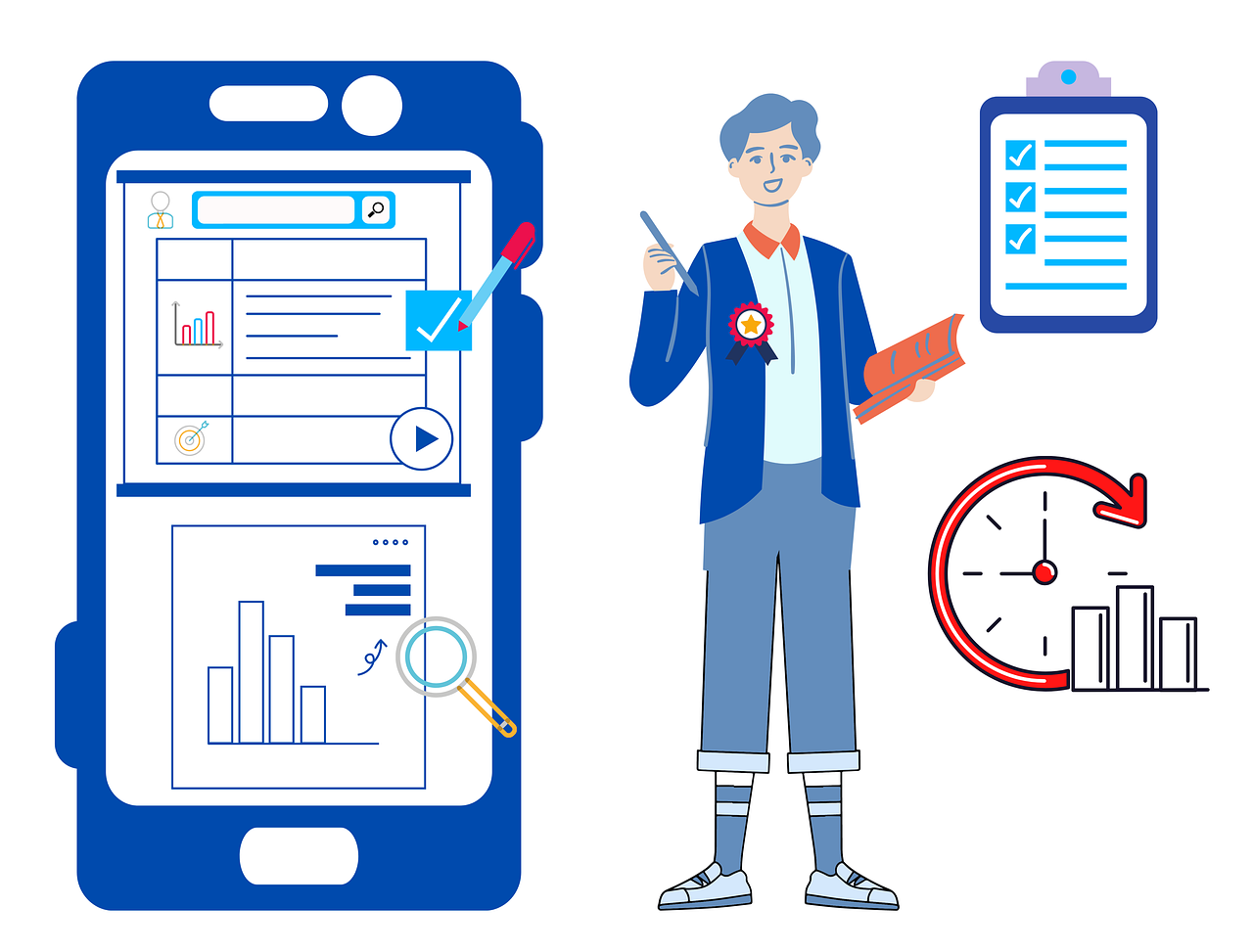

Post Comment